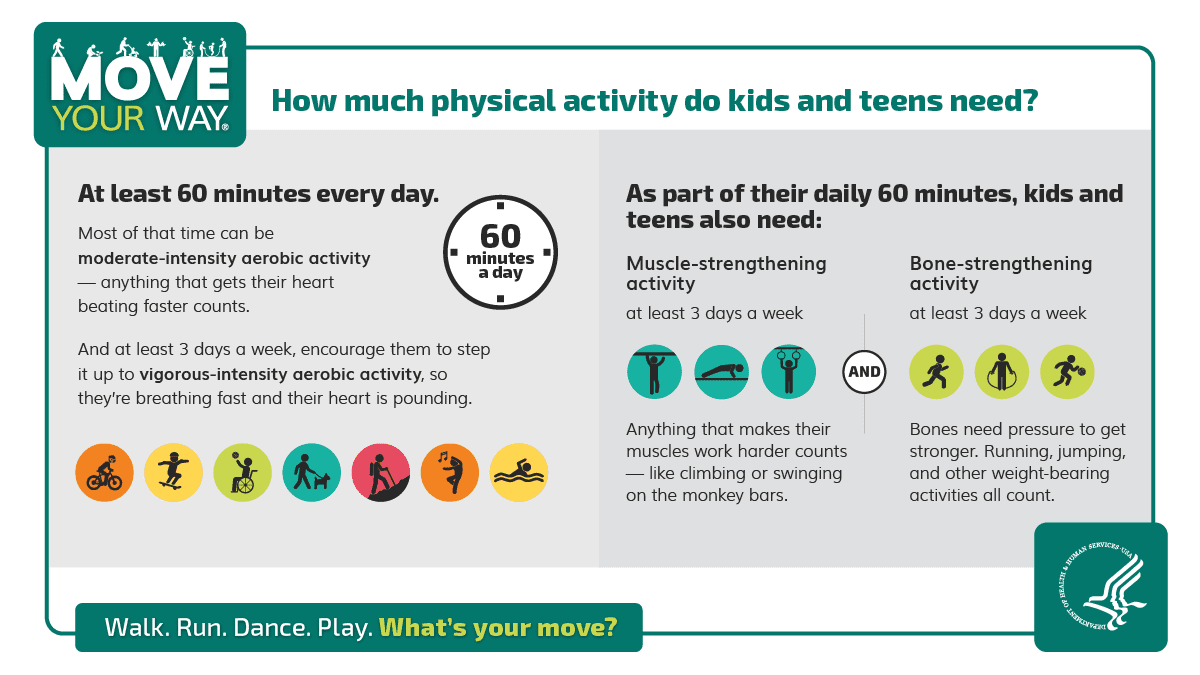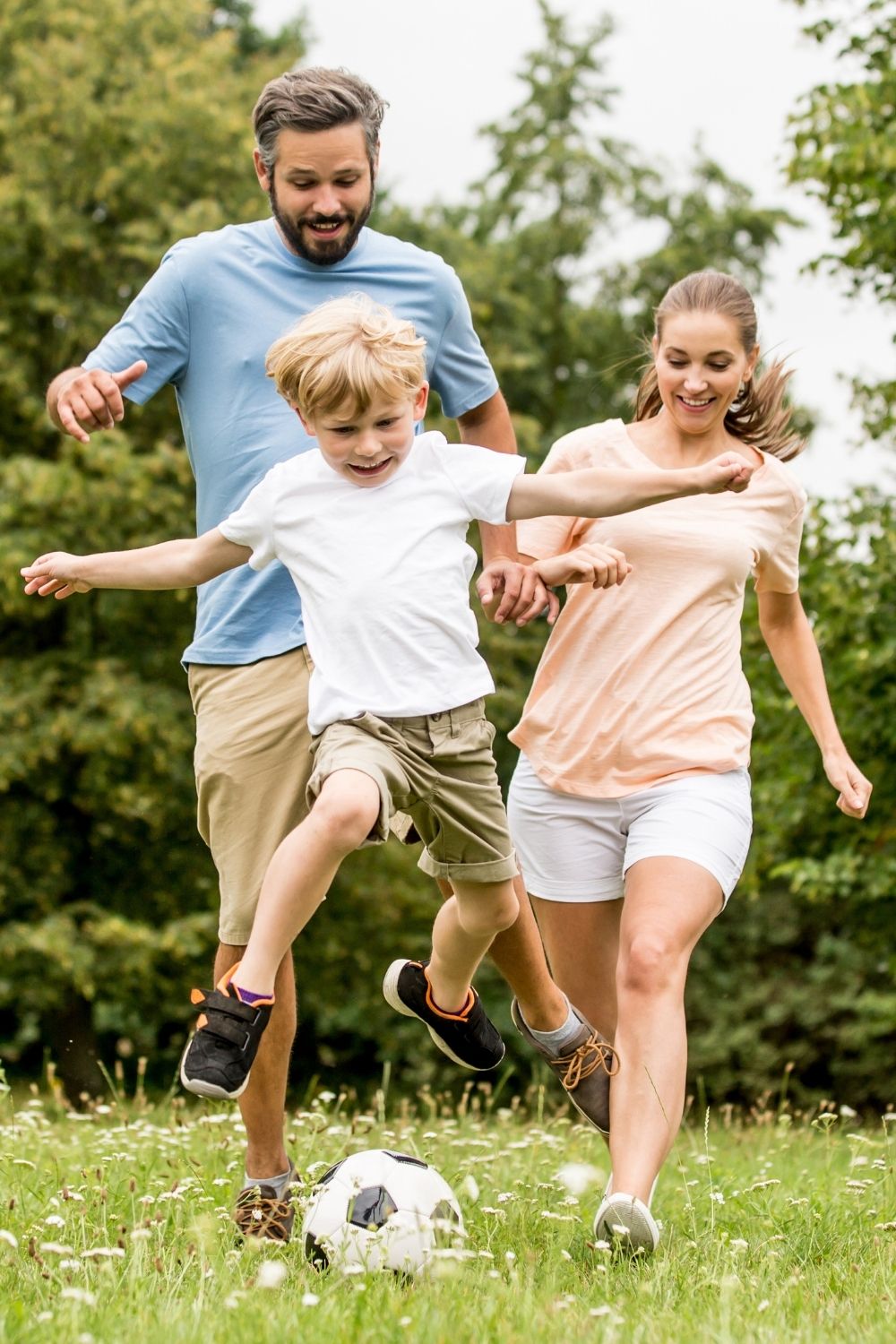May is National Children Physical Fitness and Sports Month
Physical activity is one of the best tools we have to help combat chronic diseases experienced by over half of all Americans.
Even a single session of moderate-to-vigorous physical activity can boost your mood, sharpen your focus, reduce your stress, and improve your sleep. More regular physical activity — over months or years — can contribute to a reduced risk of depression, heart disease, several types of cancer, dementia, type 2 diabetes, and obesity.
Physical Fitness and Children
Did you know that only about 1 in 4 children get the recommended 60 minutes of physical activity per day!?
Regular physical activity can help children and adolescents improve cardiorespiratory fitness, build strong bones and muscles, control weight, reduce symptoms of anxiety and depression, and reduce the risk of developing health conditions such as:
- Heart disease.
- Cancer.
- Type 2 diabetes.
- High blood pressure.
- Osteoporosis.
- Obesity.
Besides enjoying the health benefits of regular exercise, fit kids sleep better. They’re also better able to handle physical and emotional challenges — from running to catch a bus to studying for a test.
9 Ways to Encourage Your Child to Be Physically Active
Parents play a key role in helping their child(ren) become more physically active. The following are some suggestions:
1. Emphasize fun
Help your child find a sport that s/he enjoys. The more s/he enjoys the activity, the more likely s/he will be to continue it. Get the entire family involved. It is a great way to spend time together.
2. Choose an activity designed for them
For example, a 7- or 8-year-old child is not ready for weight lifting or a 3-mile run, but soccer, bicycle riding, and swimming are all well great activities for kids this age.
3. Provide a safe environment
Make sure your child’s equipment and where they practice or play is safe. Make sure your child’s clothing is comfortable and appropriate for the activity.
4. Plan ahead
Make sure your child has a convenient time and place to exercise.
5. Provide active toys
Young children especially need easy access to balls, jump ropes, and other active toys.
6. Be a role model
Children who regularly see their parents enjoying sports and physical activity are more likely to do so themselves.
7. Play with your children
Help them learn a new sport or another physical activity. Or just have fun together by going for a walk, hike, or bike ride.
8. Set Limits
Limit screen time, including time spent on TV, videos, computers, and video games, each day. Use the free time for more physical activities.
9. Make time for exercise
Some children are so overscheduled with homework, music lessons, and other planned activities that they do not have time for exercise.
Kids Need Physical Activity Every Day to Grow up Strong and Healthy
The following infographic was supplied by health.gov


